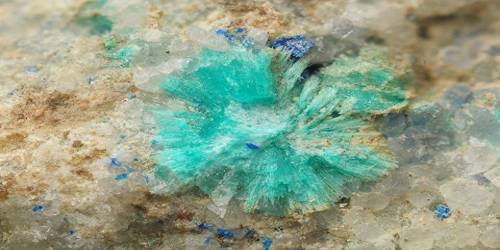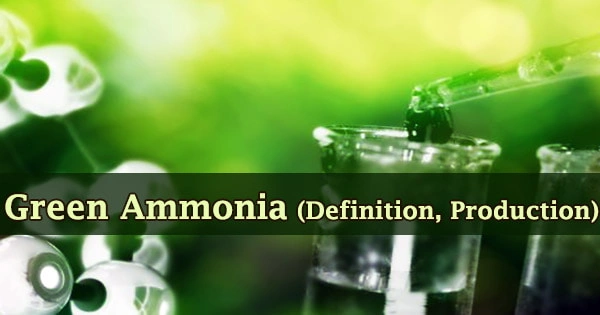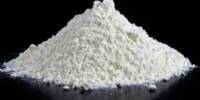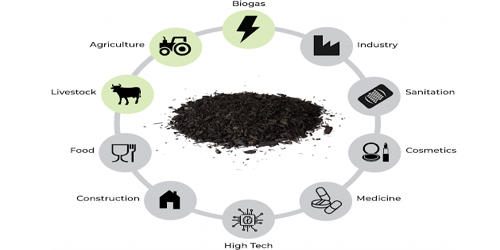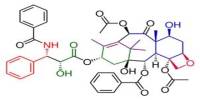Apachite is a copper silicate mineral with a general formula of Cu9Si10O29·11H2O. It is a phonolitic rock containing abundant amphibole and aenigmatite associated with the pyroxene and microperthite as the feldspar. The mineral was named for the Apache Indians, whose reservation is near the locality. The name is associated with the Apache tribe residents of the area near the Christmas copper mine in the Dripping Spring Mountains of Gila County, Arizona, the location where apachite was first described in 1980. It is not radioactive.
General Information
- Category: Silicate mineral
- Formula: Cu9Si10O2911H2O
- Crystal system: Monoclinic
- Unknown space group.
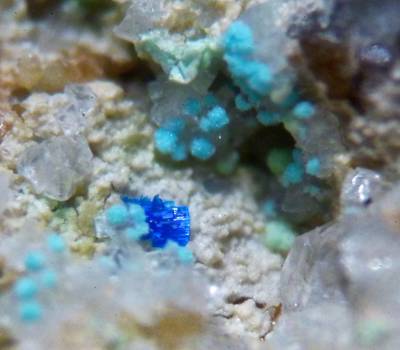
Properties
Apachite has monoclinic crystal symmetry, displaying 3 axes of unequal length with two of the axes perpendicular to each other as well as one angle oriented less than 90°. The mineral has a maximum birefringence value of δ = 0.040 which describes the difference between the highest and lowest index of refraction for the mineral. Apachite is an anisotropic mineral, so the velocity of light varies for this mineral.
- Formula mass: 1514.92 g/mol
- Color: light blue
- Crystal habit: spherical, rounded aggregates
- Mohs scale hardness: 2
- Luster: nonmetallic, silky
- Streak: light blue
- Diaphaneity: Translucent
- Specific gravity: 3.37.
Apachite is a translucent blue-colored mineral with a light blue streak. The mineral exists as spherical, rounded aggregates or radial crystals. The average density of apachite is 2.8 g/cm, and this mineral has a hardness of 2.
Occurrence
Apachite occurs in the retrograde metamorphic environment as fractures cutting garnet diopside skarn. It occurs as a retrograde metamorphic or mesogens mineral formed at the expense of a prograde calc-silicate in tactics. It can also be observed in fractures or crackled zones cutting garnet-diopside rock, replacing both these silicates and calcite. It occurs associated with kinoite, gilalite, stringhamite, junitoite, clinohedrite, xonotlite, apophyllite, calcite, and tobermorite.
Information Source:
